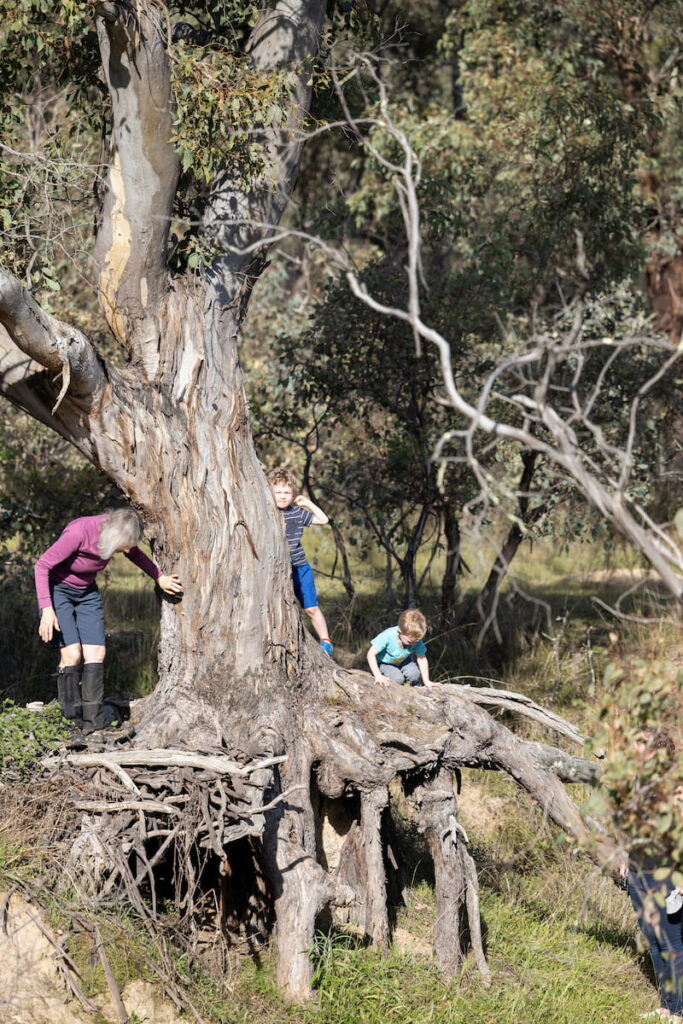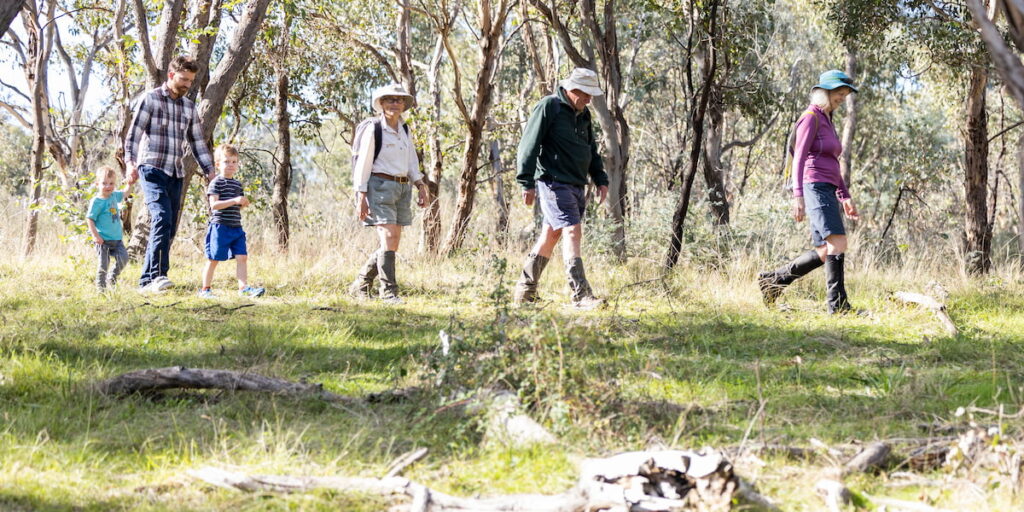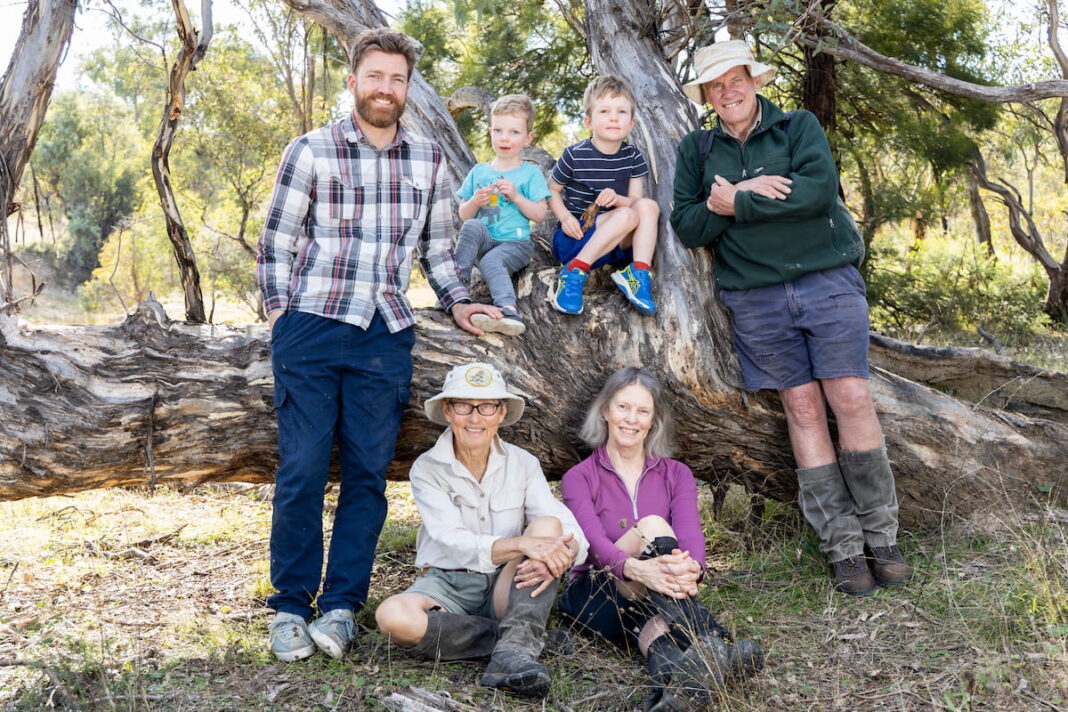When Canberra Bushwalking Club (CBC) was founded in 1961, its first members paid five shillings to join a group of like-minded people who loved being outdoors.
CBC family walks coordinator and long-term member, Linda Groom, says she moved to Canberra for work and gained an instant social circle by signing up.
“There were all these people, all under 35, not terribly rich – so we went around in battered old cars, sharing cars and doing a lot of bushwalking.”
These days, details of upcoming walks are published online, embedded with maps and extensive activity descriptions; leaders use GPS to navigate, and walkers have access to high-tech gear.
But when the club first started there were no such things.

Linda gives the example of gaiters, a relatively recently invented garment to protect the lower leg – “We just wore long socks!”
Upcoming walks were advertised with one liners, like this 1964 description of a weekend of “snow caving/igloo building” in the Snowy Mountains: “Solve your own housing problem, cheap blocks with short leases”.
Celebrating its 60th birthday this year, Linda says the club doesn’t lack long-term members.
“There are quite a few, and maybe 10 years ago we said, ‘Well, I mean that’s great for keeping the memory and the experience there, but it’s not great for the future of the club’.”
Organisers made a conscious effort to attract younger members, with initiatives like Linda’s family walks, affectionately dubbed ‘Toddler Toddles’.
Linda designs miniature exploratory courses, with rocks to conquer, interesting gullies and fantastic trees to climb.
“And pretty much always, the toddlers outfox me in some way!” she laughs. “Watching them invent their own version of the bush, that’s really fun.”
Best of all, the plan to attract younger members is working.
“We’re now getting people in the 25 to 45 age group, and they’re bringing in their friends.”
Not all CBC outings are a walk in the park, and some of the most technically or physically challenging trips aren’t suited to new members with little experience.
It is a group leader’s responsibility to ensure that everyone who is signed up for a walk will be able to manage it.
“One of the challenges is talking to people beforehand, who understand their abilities, but they don’t understand what they’re getting into,” Linda explains.
“And I understand what they’re getting into, but I don’t understand their own abilities.”
Demonstrating a test she asks those wanting to come on a difficult walk to try, Linda hops onto her kitchen bench without using her hands and jumps up and down on the slippery counter in a thick pair of socks.
“I lead some of the club’s hardest walks,” Linda says.
“We’ve been in scrub where to move forward, you have to lie down [backwards] on your pack, roll your feet over, put them down, stand up, lie down on your pack again, and so on.
It was a hot day on a recent walk to Flea Creek when one group member ran out of water, and with thick blackberries on either side of the waterway, re-filling it was a mission.
“I thought okay, we have to get to the creek,” Linda says.
“And the way we did it, we found a wombat track through the blackberries.”
Linda drops to the floor and crawls with her elbows to demonstrate how she led the group to running water.
“Some people, they’ll do it if they’re following somebody, but they’ll never do it otherwise; it’s not that hard it’s just, for the scrub, getting your brain in place.”

The high degree of organisation, dedication and care demonstrated by CBC leaders means things very rarely go wrong – safety is paramount to all planning decisions.
“I’ve been on only one walk where we were caught out overnight,” Linda says.
“It was meant to be a day walk, and we had to sleep in the rain, with no tents.
“And I remember being so tired in the middle of the night, I knew there was a trail of ants, you know, the big bitey ants, they were coming up one side, over my hip and down the other side.
“I was just too tired to care, and I think because I didn’t care, I was relaxed and none of them bit me.”
CBC president Diana Terry, who has been a member for 20 years, will celebrate the club’s 60th by walking the Australian Alps in 60 days with six others.
She says CBC experienced a huge spike in membership enquiries last year, when the pandemic kept Canberrans cooped up.
“There was a much higher demand for walks, the highest it’s ever been.”
But there were no publicly advertised walks for a few months due to COVID-19, and the club’s ethos of sharing transport to walks was no longer advisable.
In pairs or groups of three, friends set up private, socially distanced walks, and rediscovered tracks close to home in Molonglo, Kambah and the river corridors.
Diana describes Namadgi National Park as “the heart and soul” of the club over winter months, and members missed it sorely during its closure.
Most parts of Namadgi re-opened to bushwalkers and campers on 9 April, just in time for the cooler weather.
And as time marches on, so too does CBC, with no sign of stopping.
“I think the club will still be here in a few centuries,” Linda says.
For more:



